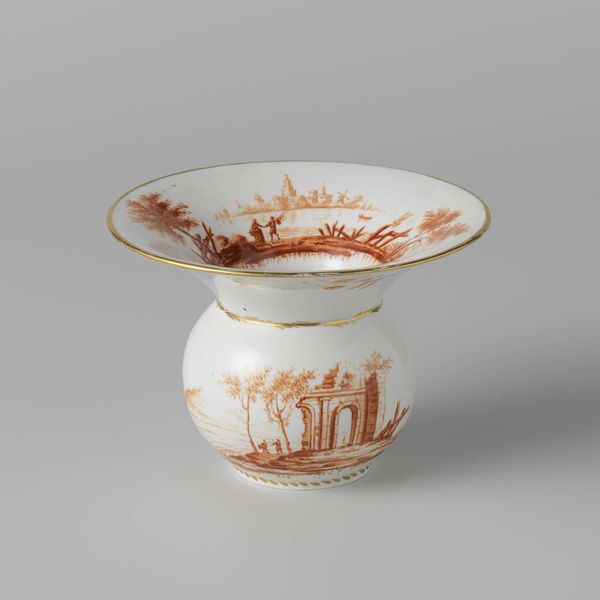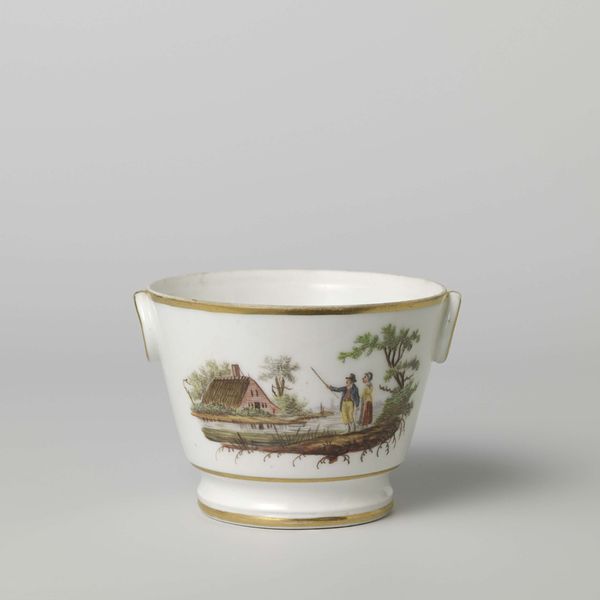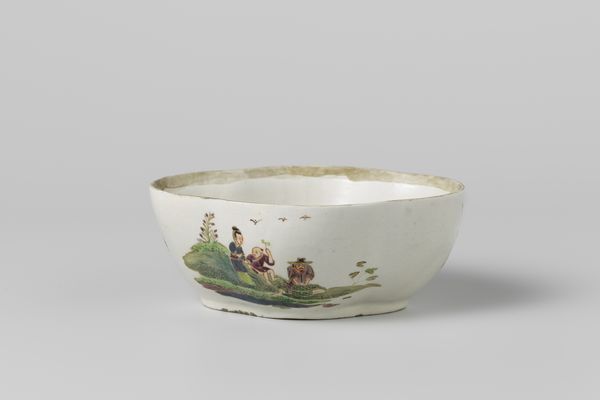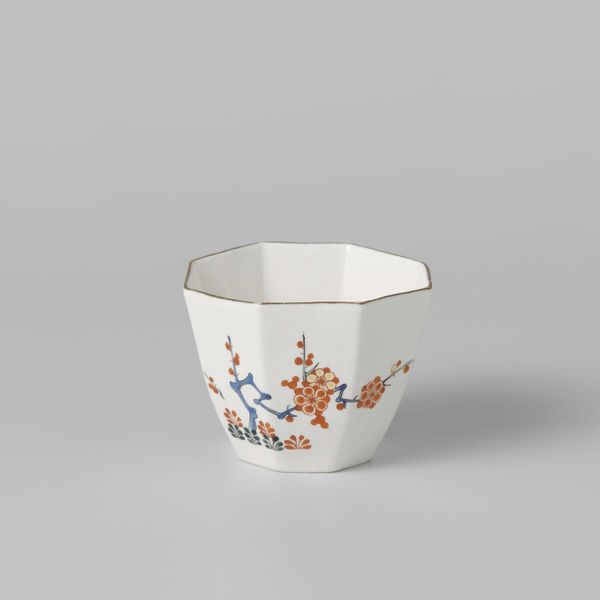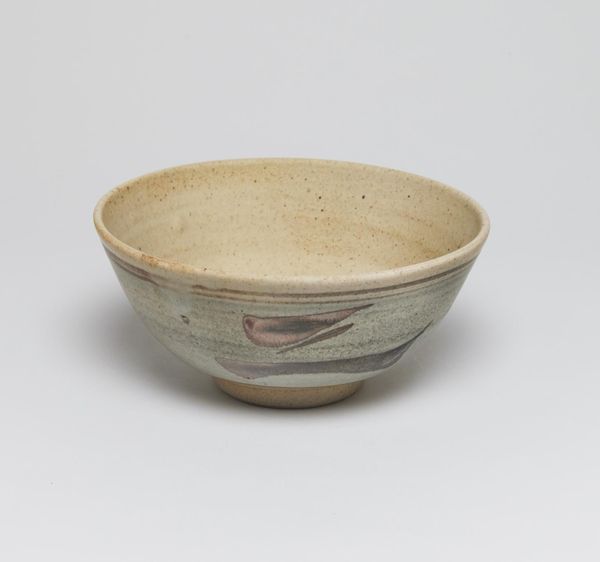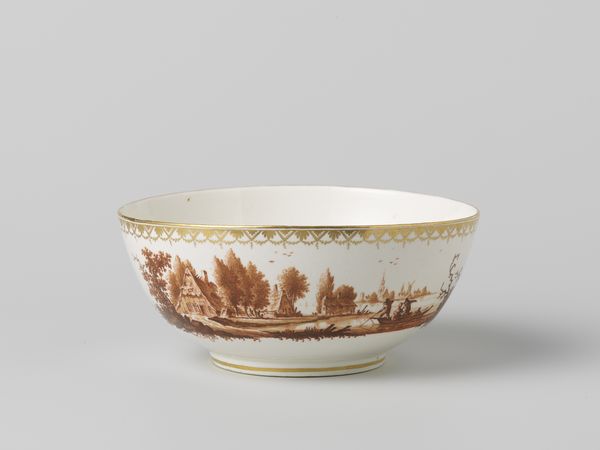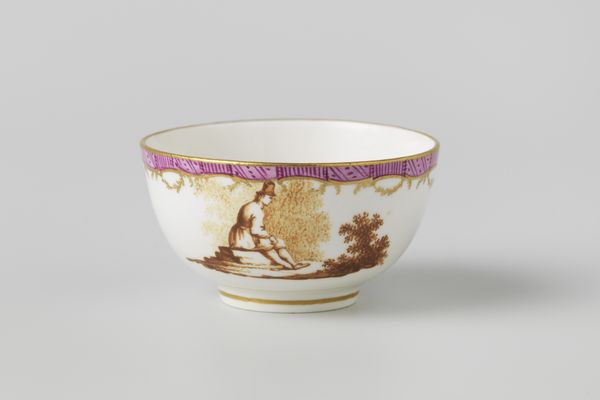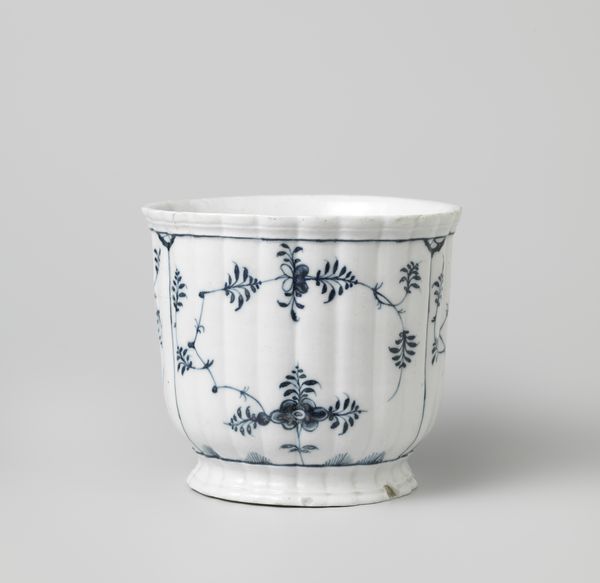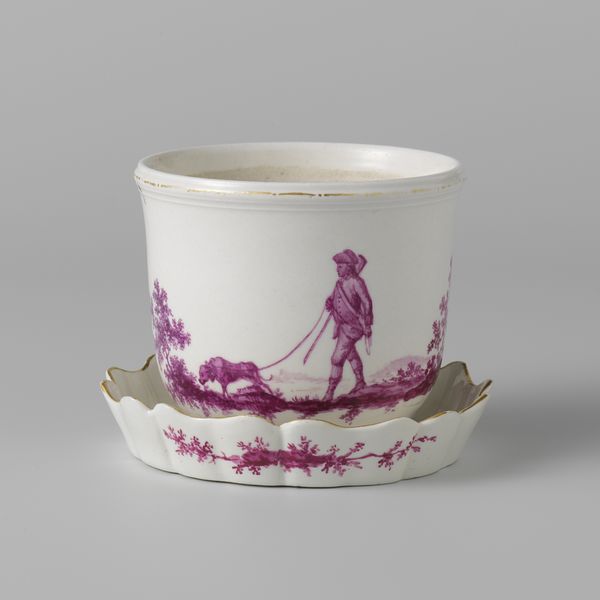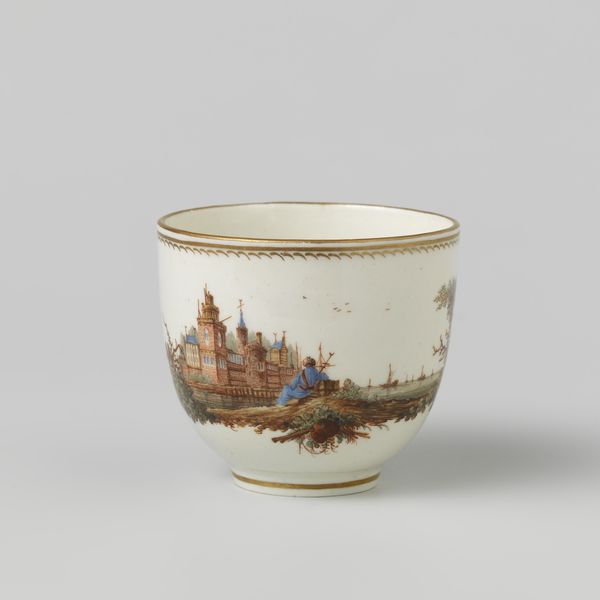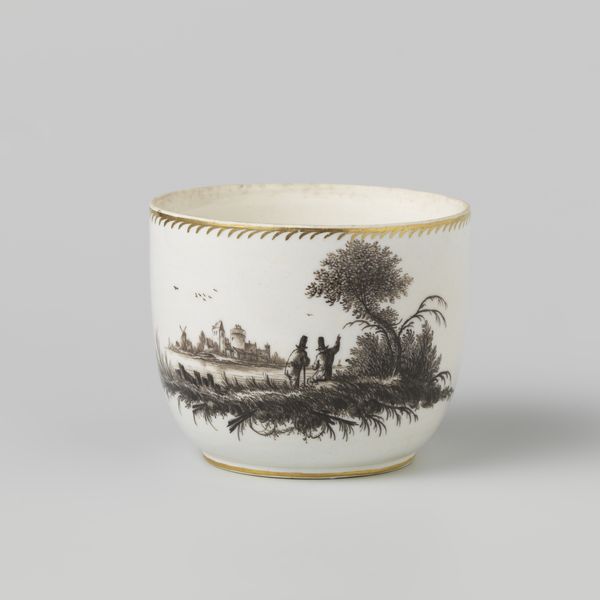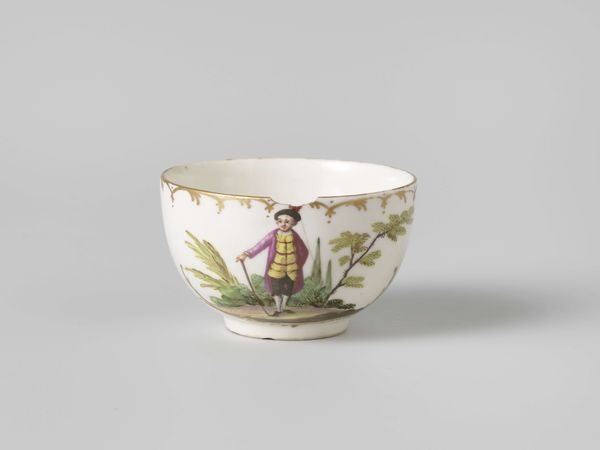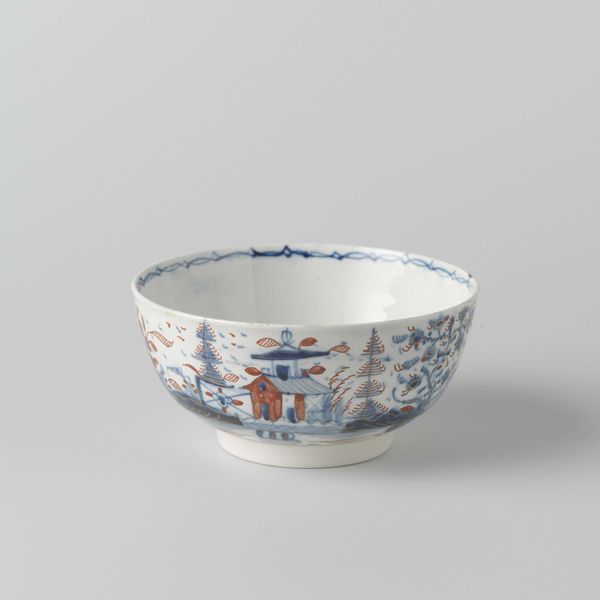
Dimensions: height 11.5 cm, diameter 12.5 cm
Copyright: Rijks Museum: Open Domain
Editor: Here we have a Loosdrecht earthenware flowerpot from 1774-1784. The Rococo style decorations are kind of charming. What social narratives do you see represented in this decorative object? Curator: Well, consider the material. Earthenware was becoming increasingly available to a burgeoning middle class. The painted genre scene—peasants fishing or perhaps just strolling—positions the owner in relation to the working class. Do you see how this object could be about constructing and communicating social identity? Editor: So, the owner gets to have a ‘rustic’ scene, without the actual dirt, inequality, and disease. A sort of curated image of the working class? Curator: Precisely. The Rococo style itself, with its emphasis on the decorative and pleasurable, speaks to a specific set of values. It suggests a detachment from the grim realities faced by many at the time, doesn't it? Editor: Definitely. I suppose that decorative art isn't just pretty things; it embodies complex social attitudes. Thinking about its context opens a new point of view. Curator: Exactly! This Bloempot, then, becomes more than just a container for flowers. It becomes a signifier in a broader social and historical landscape. Perhaps understanding this we can become critical about the aesthetic choices we make today. Editor: Right, so paying closer attention to all of the embedded, nuanced messages makes for richer engagement with history, and art in general. Curator: Indeed. These kinds of objects ask us to constantly examine how material culture reinforces, challenges, or perhaps even obscures the power dynamics in any era. Editor: Thank you; this really broadened my appreciation for this type of art object!
Comments
No comments
Be the first to comment and join the conversation on the ultimate creative platform.
